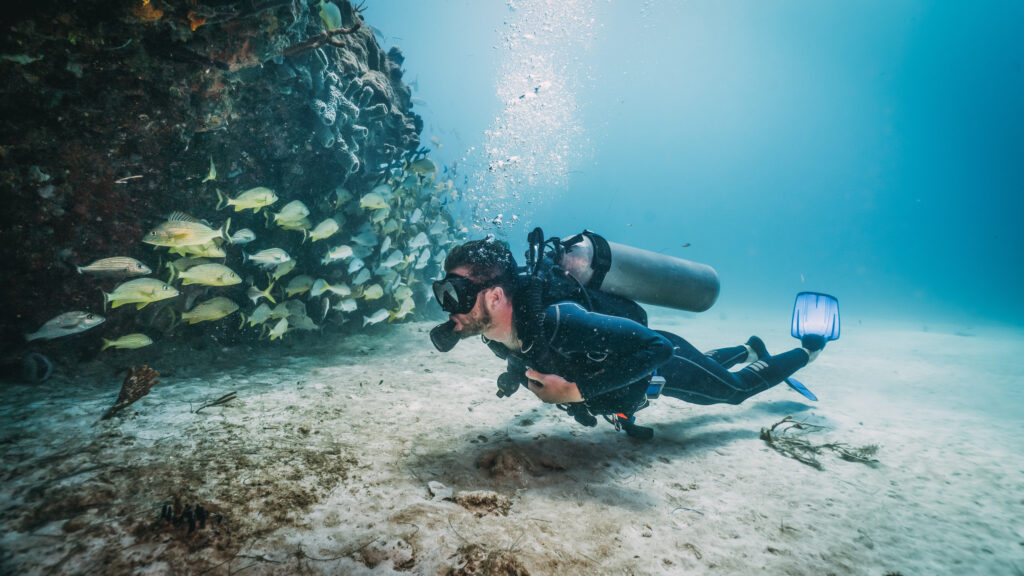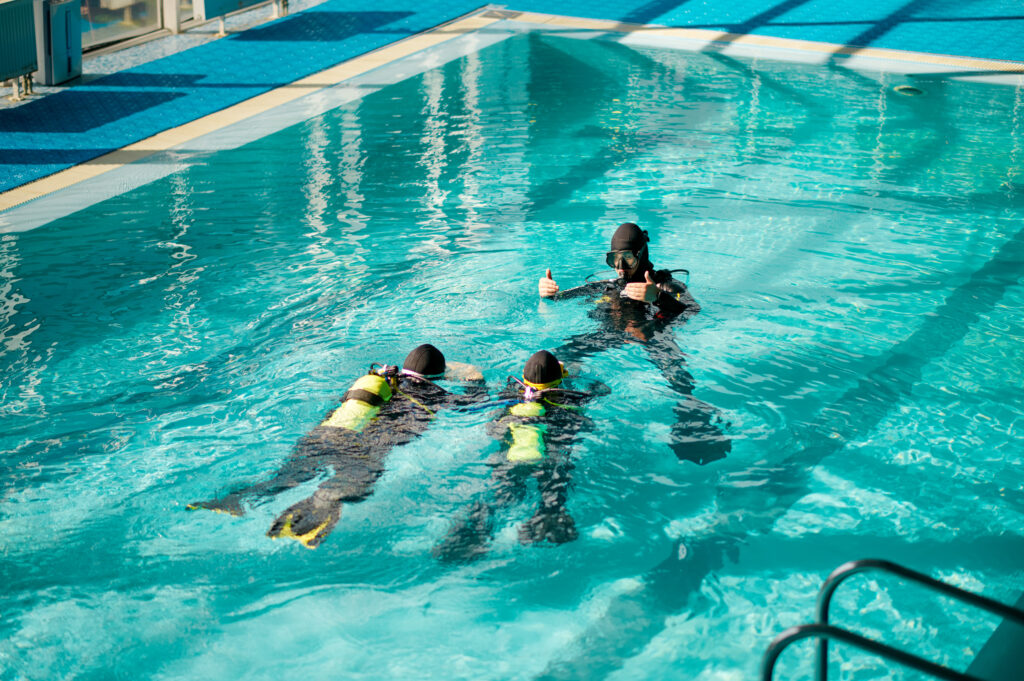What is a Air Compressor?

What is a Air Compressor? Diving beneath the ocean’s surface and exploring its hidden marvels is an exhilarating experience, the wonderment of which is enabled by the technologically advanced gear that divers wear. Among the critical components that ensure the safety and capability of these aquatic explorers is the air compressor—a fascinating piece of equipment […]
What is a Scuba Diver?

What is a Scuba Diver? A scuba diver is a person who engages in the recreational or professional activity of swimming underwater using SCUBA equipment. The term “scuba” is an acronym for “self-contained underwater breathing apparatus,” which allows scuba divers to breathe comfortably beneath the water’s surface while exploring the aquatic world at their leisure. […]
What is a A-Clamp Adaptor for Scuba Diving?

Scuba diving is a mesmerizing endeavor that introduces enthusiasts to an enchanting world beneath the water’s surface. The equipment used in scuba diving not only contributes to the safety and comfort of the diver but also enables seamless exploration. One such component is the A-clamp adaptor, which plays an integral role in connecting the diving regulator or filling whip with the diving cylinder. This entry delves into the intriguing world of the A-clamp adaptor, its significance, usage, and relation with the DIN thread connection and the CGA 850 “international” connection cylinder valve.
What is a A-Frame?

An A-Frame is a ubiquitous fixture in the scuba diving world, as essential to many diving operations as the equipment divers wear themselves. This structural device plays a crucial role in the launch and recovery processes of various underwater apparatus. These systems include diving bells, stages, anchors, or remotely operated vehicles (ROVs)—all equipment frequently used in diving operations.
What is Aggressive Decompression when Scuba Diving?

What is Aggressive Decompression when Scuba Diving? Aggressive decompression, a pivotal term within the realm of scuba diving, represents a decompression schedule intending to shorten overall decompression time for a given pre-ascent dive profile. This practice operates on a delicate balance, accepting the increased risk of decompression sickness to diminish overall ascent time, which can […]
What is a Drop Weight?

A drop weight, a fundamental tool in scuba diving, plays a crucial role in managing a diver’s buoyancy. By adding or removing weight, divers can achieve neutral buoyancy, allowing them to maintain a stable position underwater without floating upwards or sinking uncontrollably. This balance is essential for conserving energy, enhancing underwater navigation, and ensuring safety during a dive. Drop weights can be attached to a diver’s belt, integrated into buoyancy control devices (BCDs), or even strapped to ankles, depending on individual preferences and specific diving conditions.
What is Mixed Gas?

Mixed gas, in the context of scuba diving, refers to breathing gases other than air, which are used to extend bottom time, reduce decompression obligations, and manage the risks associated with deep diving. These mixtures can include combinations of oxygen, nitrogen, helium, and other inert gases, tailored to specific diving conditions and depths. By using mixed gases, divers can safely reach greater depths and explore environments that would otherwise be inaccessible due to the limitations of breathing air alone.
What is a Low Volume Mask?

A low volume mask is a specific type of diving mask designed to minimize the internal air space between the diver’s face and the lens. This reduced volume makes it easier to equalize pressure and clear the mask of water, enhancing comfort and efficiency, especially in activities such as freediving and spearfishing. Low volume masks are distinguished by their close-fitting design and the ability to improve a diver’s overall underwater experience by offering a broader field of vision and less buoyancy.
What is a Divemaster?

A divemaster, also known as a dive guide or dive leader, is a highly skilled and experienced professional recreational diver who possesses the knowledge, training, and certification to lead and supervise less experienced divers on underwater excursions. The divemaster plays a critical role in ensuring the safety and enjoyment of all participants, while also upholding the principles of responsible diving and environmental stewardship.
What is a Dive Instructor?

A dive instructor is a professional responsible for teaching and guiding individuals in the activity of scuba diving. Dive instructors play a crucial role in the scuba diving industry, ensuring that new and experienced divers acquire the necessary skills and knowledge to dive safely and enjoyably. These professionals are vital for maintaining high safety standards and promoting environmental awareness among divers. Dive instructors must possess a combination of technical diving skills, teaching abilities, and a deep understanding of underwater environments to perform their duties effectively. Their work involves training divers at various levels, from beginners to advanced certifications, and often includes leading dive trips, conducting safety briefings, and ensuring compliance with diving regulations.
